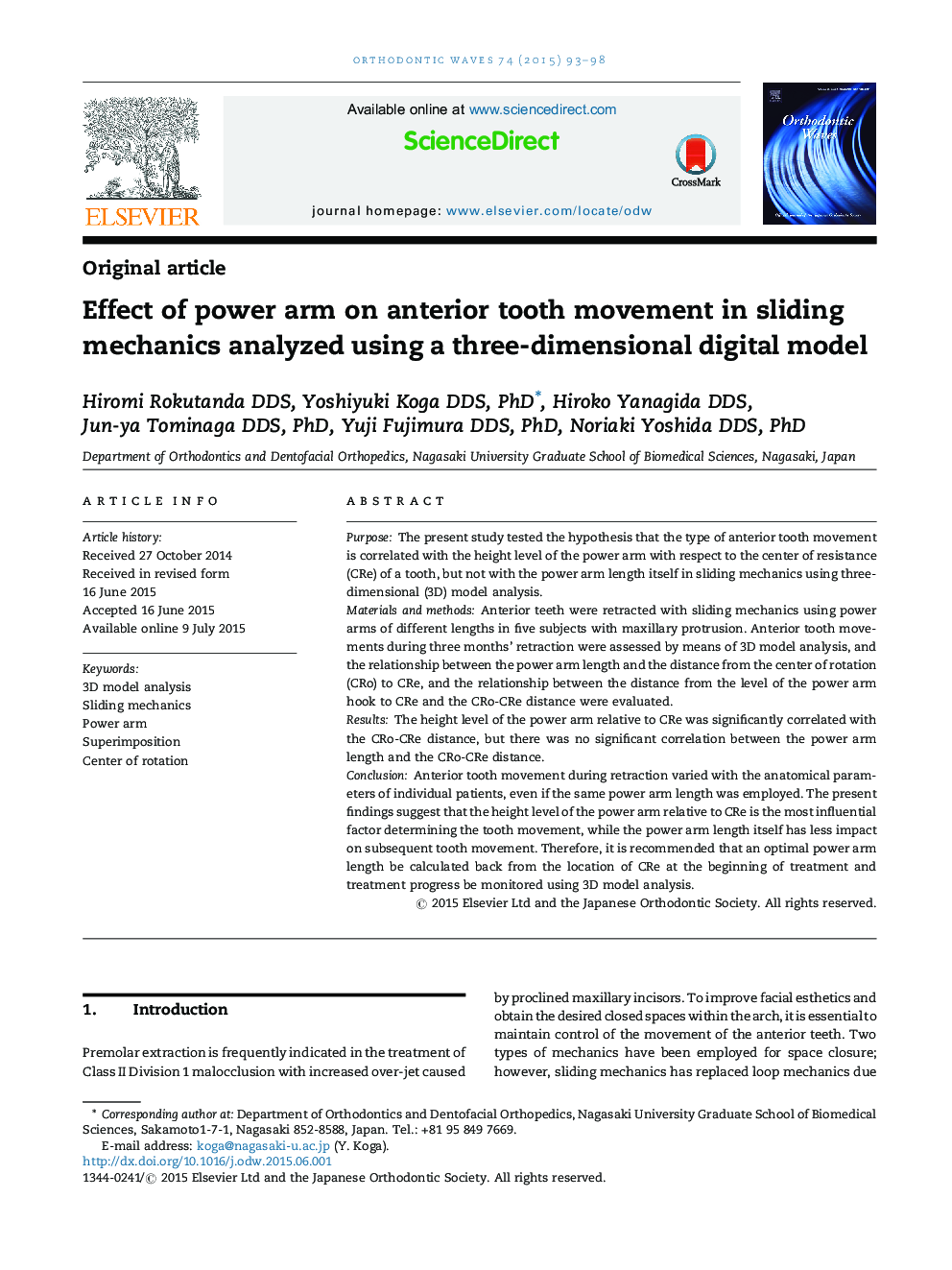| Article ID | Journal | Published Year | Pages | File Type |
|---|---|---|---|---|
| 3170316 | Orthodontic Waves | 2015 | 6 Pages |
PurposeThe present study tested the hypothesis that the type of anterior tooth movement is correlated with the height level of the power arm with respect to the center of resistance (CRe) of a tooth, but not with the power arm length itself in sliding mechanics using three-dimensional (3D) model analysis.Materials and methodsAnterior teeth were retracted with sliding mechanics using power arms of different lengths in five subjects with maxillary protrusion. Anterior tooth movements during three months’ retraction were assessed by means of 3D model analysis, and the relationship between the power arm length and the distance from the center of rotation (CRo) to CRe, and the relationship between the distance from the level of the power arm hook to CRe and the CRo-CRe distance were evaluated.ResultsThe height level of the power arm relative to CRe was significantly correlated with the CRo-CRe distance, but there was no significant correlation between the power arm length and the CRo-CRe distance.ConclusionAnterior tooth movement during retraction varied with the anatomical parameters of individual patients, even if the same power arm length was employed. The present findings suggest that the height level of the power arm relative to CRe is the most influential factor determining the tooth movement, while the power arm length itself has less impact on subsequent tooth movement. Therefore, it is recommended that an optimal power arm length be calculated back from the location of CRe at the beginning of treatment and treatment progress be monitored using 3D model analysis.
